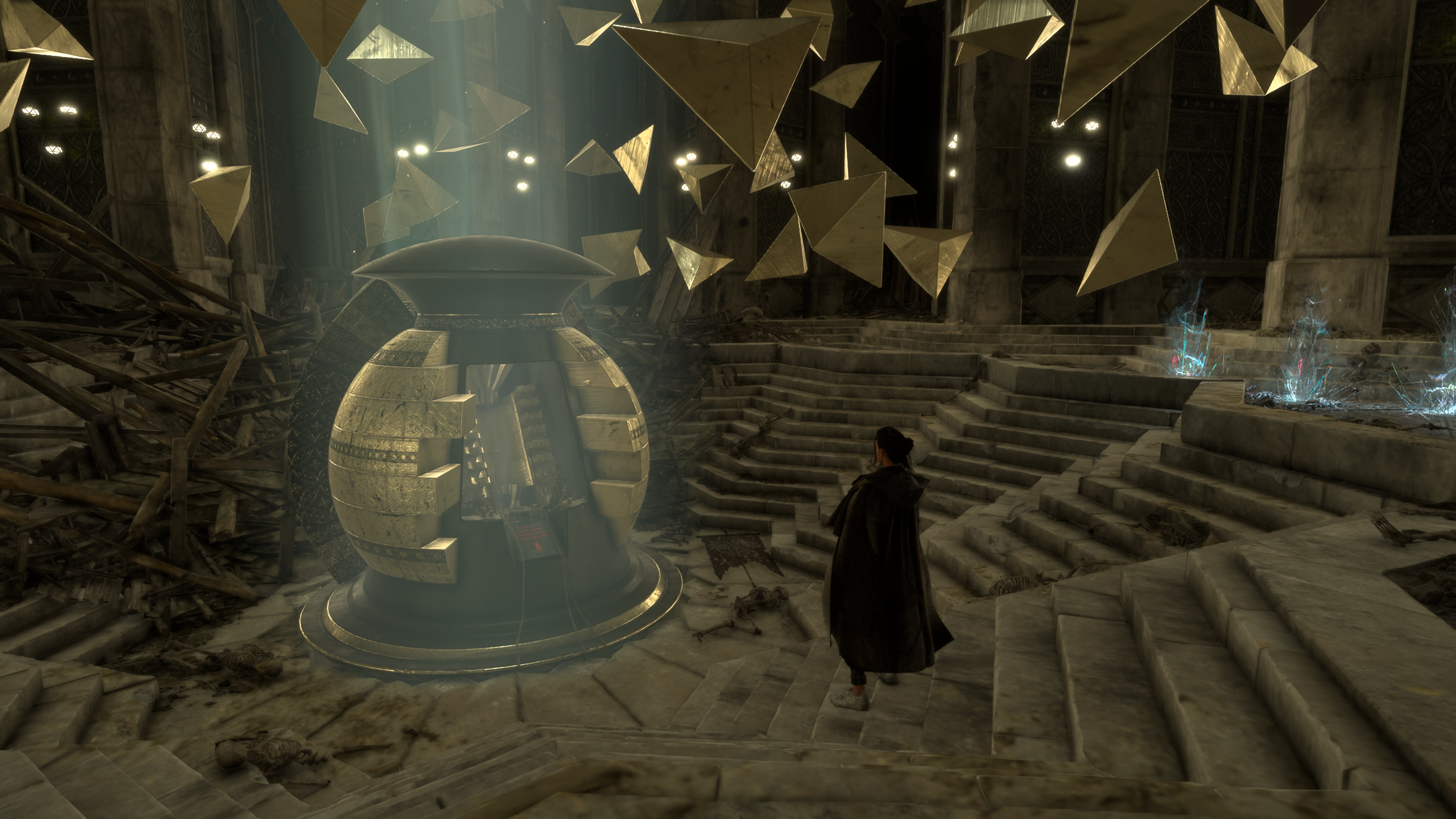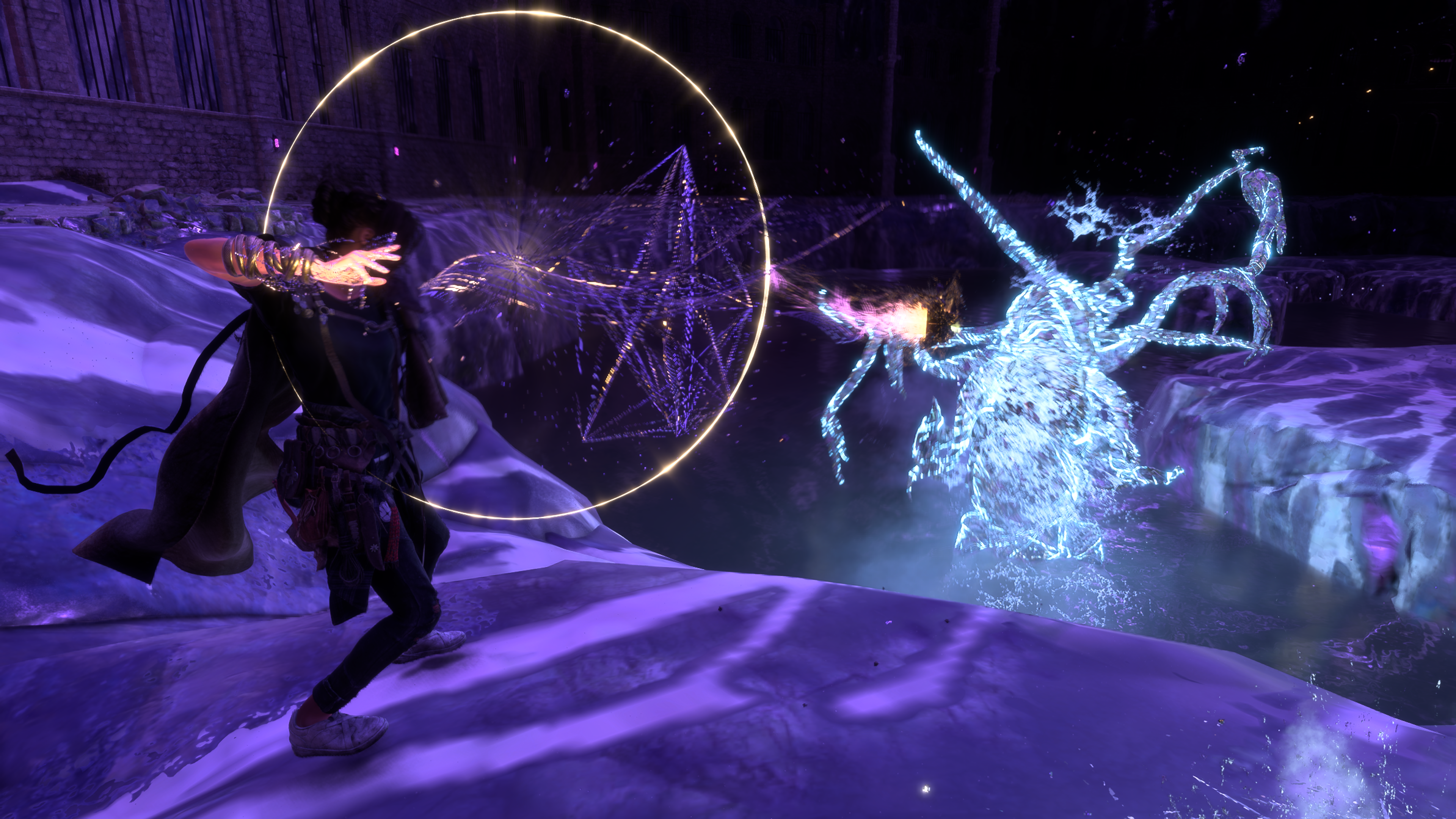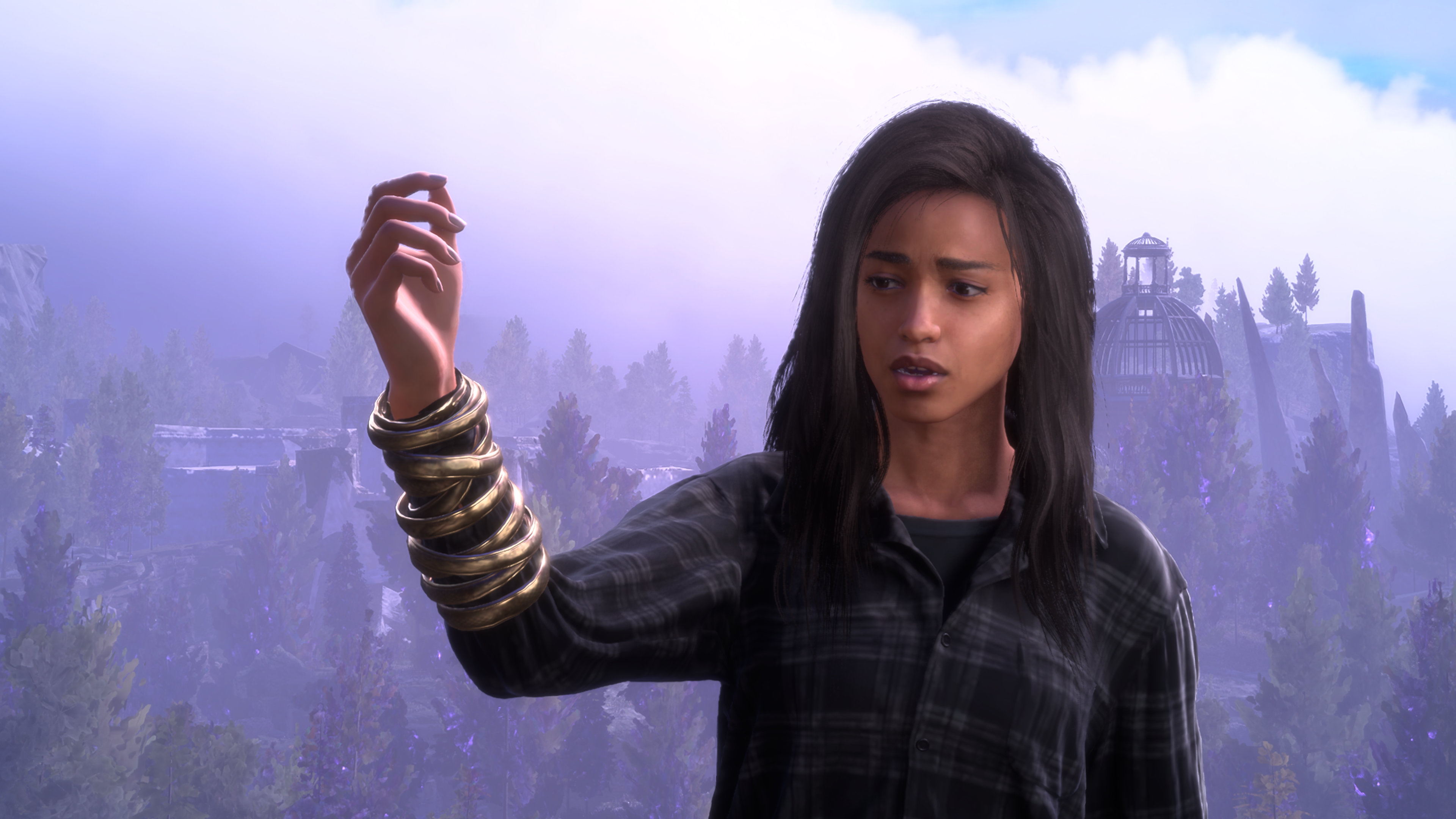It turns out Forspoken has bigger problems than some badly-landing bantz. The PC version absolutely brutalises low-end hardware, an issue compounded by its high yet often unhelpful system requirements, and framerate drops and stuttering remain common even on some of the best graphics cards around. Your best chance of a smooth ride in Forspoken lies in lowering some graphics options, so I’ve been trying them all out to see which are the best settings to cut down – as well as which ones you can afford to keep high.
I’ll warn you now, though: a lot of older, weaker PC setups are going to be a lost cause, while tougher resolutions like 1440p and especially 4K are going to need even more powerful GPUs and CPUs than usual. DLSS and FSR upscaling can help, but by and large, you can expect to make deeper quality cuts to Forspoken than you might be used to making, even on other recent blockbuster and RPG games.
That’s not to put you off, mind. With the right settings adjustments, it is possible to give Forspoken’s PC performance a sizeable boost. Just don’t go in expecting to fill out the 144Hz refresh rate on a speedy gaming monitor.
Forspoken system requirements and PC performance
I’ve analysed/moaned about Forspoken’s lofty hardware desires here. You can read the official system requirements in that article if you wish, but I’m going to post my own, revised specs lists below, as I still think they better represent the hardware you’ll actually need. And because I made a list for 1080p, which the originals didn’t, so nyehhh.
Forspoken minimum system requirements, RPS version (1080p / 45fps)
- GPU: Nvidia GeForce GTX 1070 (or AMD equivalent, at least a Vega 56)
- CPU: AMD Ryzen 3 1600 / Intel Core i7-3770
- RAM: 16GB
- OS: Windows 10 64-bit / Windows 11 64-bit
- Storage: 150GB HDD (SSD if at all possible)
Forspoken recommended system requirements, RPS version (1440p / 60fps)
- GPU: AMD Radeon RX 6700 XT / Nvidia GeForce RTX 3070
- CPU: AMD Ryzen 5 3600 / Intel Core i7-8700K
- RAM: 16GB
- OS: Windows 10 64-bit / Windows 11 64-bit
- Storage: 150GB SSD
Forspoken ultra system requirements, RPS version (4K / 60fps)
- GPU: AMD Radeon RX 6800 XT / Nvidia GeForce RTX 4080
- CPU: AMD Ryzen 5 5800X / Intel Core i7-12700
- RAM: 16GB
- OS: Windows 10 64-bit / Windows 11 64-bit
- Storage: 150GB NVMe SSD
Still, while it’s tempting to bleat on about how hardly anyone is going to play at 720p, or have 24GB of system RAM, let alone 32GB, the official requirements can also be accurate in all the scariest ways. Surely a GTX 1060 can handle more than 30fps at 720p, right? Nope – 1080p brings this stalwart GPU to its knees. But do you really need a £1000-plus card like the RTX 4080 for smooth 4K? Yes! You do!
Forspoken is a killer, the kind of game that used to spawn decades-long running jokes about whether a PC could run it. Except while Crysis did look sumptuous for its time, Forspoken’s need for a pimped-out rig is harder to justify. It looks… fine, I guess, but it’s never clear how these visuals can be so damned taxing. Even on maxed-out quality, the texture work isn’t especially impressive, the lighting is unremarkable, and the character and environment models are merely okay. There’s some lovely particle effect displays during combat, but those don’t seem to drop the FPS by themselves.
And boy, are there drops. An RTX 3070 that might be hitting 90fps at 1440p in a tight dungeon corridor could plummet to nearly half of that during a fight, or while paranormally parkouring through the open world. The same goes for the GTX 1070, the absolute bare minimum for 1080p, and even the mighty RTX 4080 suffers from inconsistencies. Not to mention occasional stuttering, regardless of which storage, CPU or RAM is sharing the load.

Speaking of RAM, Forspoken’s need for 32GB has been greatly exaggerated, but your choice of storage device matters more than in most games. I’ve only played it on a Crucial P3, a PCIe 4.0 gaming SSD, but even that can take a few seconds to load up the in-game map screen. Alice Bee, who’s on review duty, reports that this apparently took about 10 seconds on her mechanical hard drive. To open a map!
Conversely, though also serving to make the menu issue even weirder, Forspoken’s title menu-to-in-game loading time can potentially be cut down to a couple of seconds on the right setup. That’s because it’s the first PC game to get DirectStorage integration, so with a combination of Windows 11, any decent GPU, a compatible CPU and ideally an NVMe SSD, this particular loading screen can get in your way for a fraction of the time that it might on a non-compatible PC. Processor speed still looks like a factor, though – a load time of about four seconds on an Intel Core i5-11600K became about two seconds on the newer Core i5-13600K.
Another mercy is that Forspken can run on the Steam Deck: 30fps-40fps in the technically tougher areas, albeit only on the lowest possible settings. That involves running FSR 2 in its blurriest Ultra Performance mode, which is actually fine for most moment-to-moment spellcasting, though some bits of small text become difficult to read on the Deck’s 1280×800 screen. The zoom function (Steam button + L1) can come in very handy here.

Forspoken: best settings guide
For all its hardware-mauling, Forspoken does at least provide the tools to tune up performance. Nevertheless, there are two of these you can and should ignore entirely.
The first of these is the built-in benchmark tool. It’s mainly just swooping landscape shots with no real action, and therefore fails as a useful measure of how Forspoken will really run when you’re in the thick of it. When I first tested an RTX 3070 at 1440p (with Standard quality settings and DLSS on Quality), it averaged 90fps in the benchmark, only to drop to 50fps during in-game combat. Huge swathes of open world areas, as well as the hub city of Cipal, are also much harsher on performance than the benchmark tool is. For my testing, then, I devised a manual but easily repeatable run through an open world area that would more accurately reflect how Forspoken performs under strain. All the FPS results henceforth were recorded from this custom run, not the benchmark tool.
The second is the selection of graphics quality presets. the High and Ultra-high presets aren’t such bad offenders, but the Standard and Low presets lock in some deeply strange upscaling choices. Because Low forces FSR to run in Ultra Performance mode, whereas Standard sets FSR to Quality mode, the two end up performing about the same: 66fps on Low and 65fps on Standard, using the RTX 3070 at 1440p.
It’s better to set the preset field to Custom and fiddle with the individual settings yourself. Which would be a lot easier if someone tested them all individually, and subsequently prepared a guide to which ones can be lowered for the most gain, wouldn’t it? Oh look, here’s one.
My baseline is the RTX 3070, running at 1440p alongwise a Core i5-11600K and 16GB of DDR4 RAM. This setup averaged just 34fps on the Ultra-high preset, so here’s how changing each setting improved (or worsened) that result.
Variable Rate Shading (VRS): Despite VRS often being touted as a performance booster, including in Forspoken’s own description, turning it off saw a little bump from 34fps up to 38fps. Mileage may vary on lower-end GPUs especially, but for something like the RTX 3070, VRS can be ditched.
Dynamic Resolution: Leave this off. Enabling dynamic resolution will improve framerates (up to 45fps, in my case) but in Forspoken, the rez changes are easily noticeable, and can even exacerbate its stuttering issues. If you’re going to mess with resolution, stick to upscaling.
Model Memory: This, and Texture Memory, are the only individual settings ungoverned by the presets. As such they’ll always need to changed manually, but this is worth doing, as switching from the default Standard setting to High pushed average performance up to 38fps.
Texture Memory: Again, bump this up if you’ve got 8GB or more VRAM. High and Ultra-high both gave me 37fps, so just High should be fine for most.
AMD FidelityFX Super Resolution 2: If you’ve got an Nvidia GeForce RTX graphics card, ignore FSR and use DLSS. Everyone else, whack it on Quality mode for a major FPS boost – 34fps became 50fps for me, with this one change. You could alternatively use the faster but lower-quality modes on weaker GPUs, but on the RTX 3070, Balanced mode averaged 51fps, and that 1fps difference ain’t worth the drop in sharpness.
Nvidia DLSS: The current king of upscalers, even if it is limited to RTX GPUs only. Its superior sharpness lets you drop it to a faster setting with less of a fidelity loss than FSR, and I’d rather have the 53fps of Balanced mode than the 47fps of Quality mode.
Sharpness: A setting that affects the crispness of both upscalers. Raising this from the default 0.80 to 1.00 doesn’t hurt performance at all, and makes DLSS Balanced look even better, so… do that.

Render Resolution: As with Dynamic Resolution, you don’t have to bother with this. FSR or DLSS essentially do the same thing – lowering render rez to improve performance – but will also piece each frame together to make it sharp again, which this setting won’t.
Model Detail Level: You can keep this on High, as lowering it to Standard doesn’t seem to improve performance at all.
Texture Filtering: Another one to leave turned up. When I dropped this from High to Standard, Forspken actually ran slightly worse, averaging 32fps.
Reflections: Forspoken doesn’t make particularly heavy use of reflections, so lowering their quality from High to Standard bestows only a modest performance gain of 34fps to 35fps.
Motion Blur: Turning this off doesn’t enhance performance, and while it does paper over low FPS, it’s fine to disable if you just don’t like the effect.
Depth of Field: Disabling the DoF effect can produce a surprisingly marked performance improvement. That 34fps average became 37fps, which doesn’t sound like much, but is nearly a 9% gain at no great cost.
Fog Quality: I got a good boost up to 39fps after lowering this from Standard to Low. The catch is that some areas are thick with spooooky mist, so some visual impact is lost… but still, a 15% gain is hard to pass up.
Cloud Quality: Just like Fog Quality, lowering this can drastically change the look of certain areas, in exchange for relatively hefty speed gains. Dropping from High to Standard seems like a good compromise to me: it didn’t completely erase cloud effects like the Low setting did, but still pushed average FPS up to 38fps.
Shadow Quality: Another setting worth dropping. All the way down to Low, really, as the 41fps I recorded represents an 18% uptick on the High setting.
Ray Traced Shadows: Even if your GPU supports ray tracing, RT shadows don’t look like much of a worthwhile upgrade here. They’re a tad more on the photorealistic side than regular shadows, but when every frame per second counts, they’re a luxury you can lose. Turning them off got the RTX 3070 up to 38fps.
Ambient Occlusion: There’s very little detail difference between AO’s High and Standard settings, and only a tiny performance advantage to the latter (34fps versus 35fps). Still, every little helps, so I’m recommending Standard.
Ray Traced Ambient Occlusion: Bizarrely, for a ray tracing effect, there was no performance difference whatsoever after I disabled this setting. It’s an extremely minor effect, in fairness, so if your GPU supports it, you may as well leave it on.
Anti-Aliasing: Stick to the default Temporal AA setting; neither of the SMAA and FXAA alternatives look as smooth, and while FXAA only improved the RTX 3070’s output by 1fps, SMAA was actually 3fps slower as well. All that said, if you’re using upscaling, this option will be greyed out anyway. DLSS uses its own AI-assisted anti-aliasing, and FSR includes a custom TAA algorithm that overrides other AA settings.
Evidently, getting Forspoken to run decently isn’t just a matter of flicking off a couple of key settings. It takes scraping together all those tiny morsels of improvement across nearly two dozen individual options, so here’s the full list of what I reckon are the best settings to balance visuals and speed:
- Variable Rate Shading (VRS): Off
- Dynamic Resolution: Off
- Model Memory: High
- Texture Memory: High
- AMD FidelityFX Super Resolution 2: Quality, unless using DLSS
- Nvidia DLSS: Balanced
- Sharpness: 1.00
- Render Resolution: 100%
- Model Detail Level: High
- Texture Filtering: High
- Reflections: Standard
- Motion Blur: Your preference
- Depth of Field: Off
- Fog Quality: Low
- Cloud Quality: Standard, unless you’re really struggling, in which case use Low
- Shadow Quality: Low
- Ray Traced Shadows: Off
- Ambient Occlusion (AO): Standard
- Ray Traced Ambient Occlusion: On
- Anti-Aliasing: Temporal AA
Using these settings drove the RTX 3070 from 34fps on the Ultra-high preset to 66fps, a tasty 94% increase. And it only looks noticeably downgraded in areas with a lot of thick fog/smoke/cloud effects.
I still don’t think Forspoken runs as well as it should, even with these tweaks. But, as long as your hardware is fairly modern, it should be possible to at least pull yourself out of the mud.


